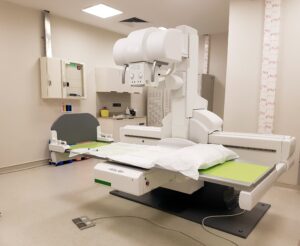If you have never heard of a fluoroscopy exam, you’re not alone. It’s probably because it is the least recognizable of all the imaging tests, or perhaps because you have simply never needed one. This painless test has many uses, but what are those uses exactly?
Fluoroscopy
A fluoroscope is an imaging device that depicts a continuous X-ray on a monitor like a movie, which differs from a regular X-ray that needs time to be developed. A fluoroscopy is able to pass over the area of the body to be examined and shows that area in “real time” instead of in a single photo.
over the area of the body to be examined and shows that area in “real time” instead of in a single photo.
It is possible to see many regions of the body including the digestive system, reproductive system, skeletal system, urinary tract, or specific organs like the kidneys, heart, and lungs to detect a blood clot in major arteries or veins.
Reasons to Order a Fluoroscopy Exam
There are 2 main reasons for a fluoroscopy exam.
A fluoroscopy is most often used when it is necessary to diagnose and locate abnormalities or foreign bodies that are otherwise unable to be examined using standard X-ray technology.
This test is also used as a tool when performing minimally invasive procedures or surgeries including biopsies, catheterizations, or when doing spine and joint injections.
Some common ways fluoroscopy is used as a treatment tool include the following:
- As a way to guide the placement of devices in the body like a stent to open a narrowed blood vessel.
- As an angiogram to view blood vessels and organs.
- In orthopedic surgery to guide joint replacements and to treat fractures.
- It allows to see blood flow in coronary arteries and to evaluate any arterial blockages.
There are many other treatments that utilize a fluoroscopy to assist the doctor. Some are performed as a same day procedure and others as in-patient if general anesthesia is needed. There is no pain from the exam, but you may need local or general anesthesia for the actual treatment being performed.
Benefits vs Risks of a Fluoroscopy
Southwest Diagnostic Imaging Center will always weigh the benefits of any imaging test versus the risk of radiation exposure. Fluoroscopy exams provide substantial benefits to patients and are instrumental in helping to guide treatment plans. It is helpful to keep a record of your previous X-rays and scans to share with your physician.
If you are going to undergo a fluoroscopy exam, speak with one of our specialist about the amount of radiation to be used and if there are any special preparations to complete prior to your test.

